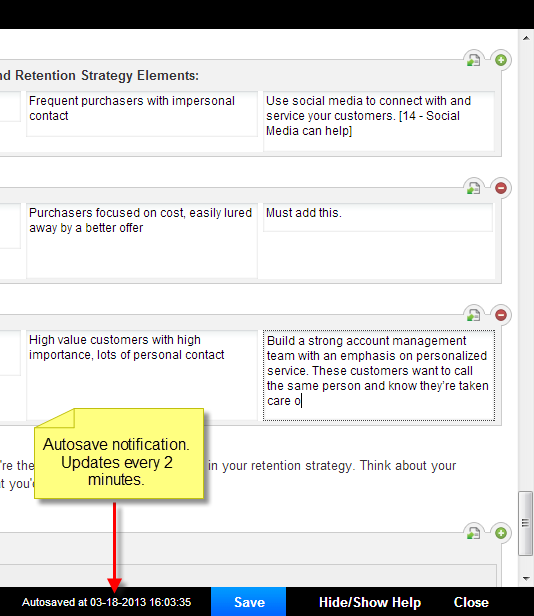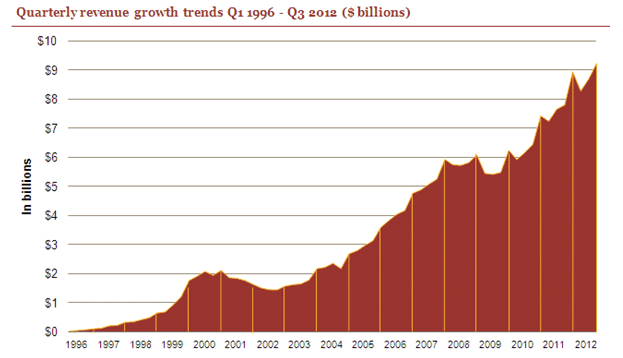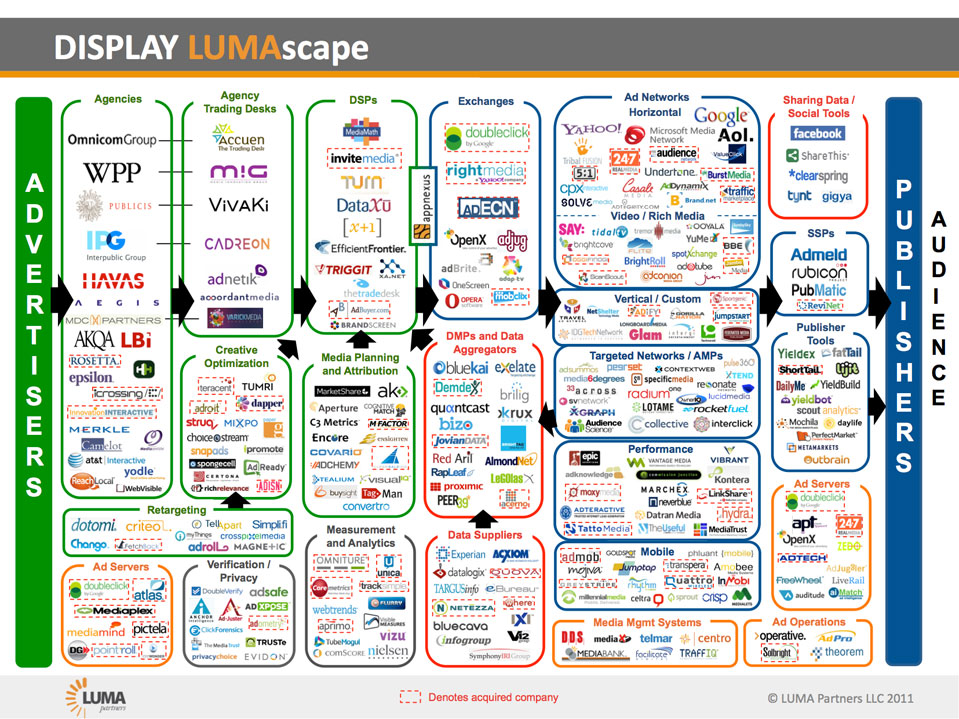Marketing Guides
News & Updates
Updates to the Marketing MO App – February 2013
Here’s a list of the updates to the app in February.
Autosave
Many of you have asked for an autosave feature, so you won’t lose any work if you accidentally close an exercise before saving, or if you lose your internet connection while working in an exercise. Autosave is now live – here’s how it works.
When you’re typing responses into the guided tools, the app will automatically save your work every 2 minutes.
A message appears at the bottom of the window with the timestamp of the last autosave.

That’s it!
Extended Session Time
Our session time had previously been set at 4 hours. With autosave, your session time can extend indefinitely if you’re working on a plan in the app.
Each time the autosave runs while you’re typing in an exercise, your session timer restarts. So the 4-hour session timer resets while you’re working.
Thus, your session will only time out after 4 hours of use without entering in responses into the app, or after 4 hours of inactivity.
SEO and SEM > Inbound Link Generation > Select Other Link Building Activities – Tool 20.4.c
This exercise guides you through a lengthy list of activities to generate inbound links to your website. We added recommendations for obtaining links from .edu domains:
Create content for .edu websites. While Matt Cutts says that Google doesn’t rank .edu extensions higher than others, .edu links typically have a high volume of trusted inbound links, which increase their level of trust. Obtaining links from .edu sites isn’t easy, but it can be accomplished with some careful thought and attention. Here are some suggestions for obtaining .edu links:
- Write articles that appeal to students. Link the subject to your core content or product/service. For example, if you’re a financial planning firm, discuss 5 ways for college students to save enough money for a spring break trip.
- Sponsor a student group.
- Write articles about how students can obtain jobs in your field.
- Consider paying for a link on a university admissions site, if your product/service is relevant to students or your local community.
- Offer a free product demonstration, giveaway or service session on a local campus. Schedule in advance and promote it – the announcement might land on a .edu website.
Distribution Channels > Distribution Channel Analysis > Select Channel Type – Tool 3.1.a
This exercise walks you through your business goals and outlines types of business goals that can be achieved from a new distribution channel, and provides examples of different types of channels, to help you determine if you should create a new channel. We expanded part of the introduction:
If you’re a new company, you’re probably already considering channels to access your market. If you’re an existing company, remember that your mix of channels might change throughout your product or service life cycle. For B2C companies, people’s lifestyles change, attitudes change, and the competitive landscape always provides alternate product and service options as your market evolves. Different channels can help you access new market segments and different price points.
For B2B companies, corporate needs can change rapidly, especially if you’re selling anything related to IT.
Distribution Channels > New Distribution Channel Outline > Select Channel Type – Tool 3.2.b
As you’re considering potential new channels, remember that a decision to create a new distribution channel is a long-term, strategic decision. Setting up and managing a new channel requires significant time and resources. If done well, it can significantly impact your market reach. If unsuccessful, it’ll probably reduce your bottom line due to the lost investment.
Also consider your channel strategy – are you focusing on a vertical distribution strategy, or a horizontal distribution strategy? In a vertical distribution system, suppliers and distributors work closely together while planning production, delivery, promotion and pricing. There are typically one or a handful of partners at each level, with little competition between each. An example could be an auto parts manufacturer, who contracts with a sole steel supplier, and a single retail distributor who has locations throughout its geographical market.
In a horizontal distribution system, numerous companies operate on the same level, often times working together to exploit marketing opportunities. An example could be a manufacturer that sells a food product (specialty cookies, flavored tea, or ice cream) to full service groceries, to mom and pop stores, and to large discount clubs such as Sam’s Club or Costco. Horizontal systems can also create channel conflict if one outlet is selling the same product or service at a substantially lower price.
Online Advertising > Online Advertising Options > Outline Business Goals and Online Media Options – Tool 21.1.a
We added some updated online advertising statistics and graphics:
Online advertising revenues in the US continue to grow, reaching $9.3 billion in Q312 according to the IAB. That’s an 18% increase over the same period last year.

If you’re already using online advertising and looking to expand your reach, here’s an interesting graphic (courtesy of LUMA Partners) that displays how different types of companies fit into the online advertising mix, to help you explore ideas for expanding your online reach.
CAMPAIGN PLANNING TEMPLATES / MARKETING PLANS / PROJECT MANAGEMENT
EVERYTHING YOU NEED FOR YOUR MARKETING PROJECT
